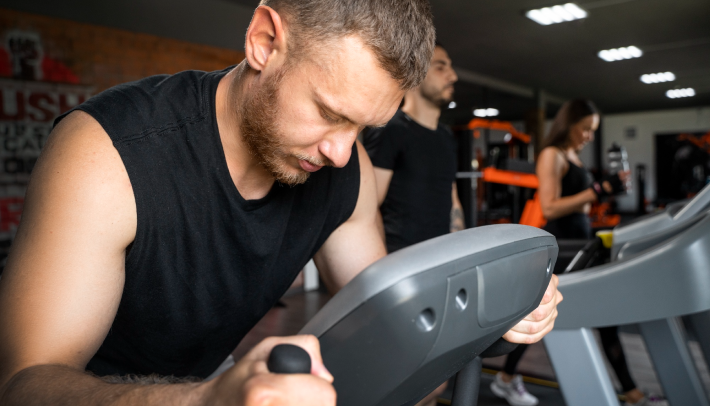
Is It Ok To Workout When Sore?
Working out is very good for your health. There is nothing more beneficial than working out on an everyday basis. It is healthy and keeps you extremely fit.
The amount of toxins that your body releases upon exercising every day is tremendous. However, is it ok to workout when sore? This is something no one is ready to talk about.
There are days when we come back from the gym looking like literal zombies. I remember not being able to walk straight after a rough day at the gym. And yet, my trainer would ask me to come back on time the next day as if I were not in a condition where I needed to be in an emergency and not in the gym.
Those were the days when we had absolutely zero guidance on how we were to workout on an everyday basis and if it was at all okay to workout every day.
However, I am here to solve the issue. In this article, we shall discuss whether is it ok to workout when and every other precaution that you would have to take when you are in pain and your body is all swollen.
What Are The Causes Of Sore Muscles After Working Out?

It is very normal for people to experience muscle soreness two to three days after working out. This is what we call DOMS or delayed onset muscle soreness.
DOMS is one of the main reasons why you feel sore after going through a heavy exercise. DOMS happens approximately 12 to 24 hours after you do an activity. It may be at its highest 24 to 72 hours after working out.
DOMS is the result of very minor and microscopic damage to the tissues of the muscles. This damage generally happens while you are working out. There are other symptoms that may involve with DOMS, like muscle swelling or stiffness.
However, there are new theories that are putting up a challenge for this narrative. A study in 2020 suggests that the soreness one feels after working out is a result of compression to the nerves within the muscles. It necessarily is not tissue damage. However, there is more research that is needed to look through this theory. There is very little evidence which could support it currently.
The kinds of exercise which could generally result in DOMS are:
- Jogging
- Strength training exercises
- Step aerobics
- Walking downhill
- Jumping
What May Increase Doms In An Individual?
Here are some of the following reasons that may increase the likeliness of a person to develop DOMS after working out:
- Changing the workout routine
- Beginning with a new exercise program
- Increasing the intensity or duration of the regular workout sessions
- Doing any physical activity that is not familiar to the body
DOMS does not need any medical treatment. It goes away on its own after a couple of days.
Is It Ok To Workout When Sore?

It is very natural to feel sore after you do a very intensive workout. It is even more common when you are trying out something new. However, if you are still feeling sore the next day, just take things lightly. Try some of the lighter exercises, such as walking. The main aim here is to let the muscle rest.
If the pain goes out of hand, it is better to try out ice, a warm bath, or any anti-inflammatory medications like ibuprofen. If you still feel like going to the gym the next day, make sure you are sticking to the light stretching exercises. They may help provide you with some relief.
Make sure to slowly get back to your routine and very gently increase the intensity. Warming up before and cooling down after is also a necessity.
If there is weight training in your workout, just try to avoid it for that day. If you prefer doing strength training every day, try to do your upper body exercises and lower body exercises on alternative days.
This way, your muscles would get adequate time to recover and rebuild before they get back to working out. It is just fine to keep doing stretching exercises or aerobics every day.
However, if you feel pain while doing all of your regular activities, or if the pain keeps intensifying as the days pass, there might be an injury that you are not able to realize. This might be the time for you to check in with your doctor.
Tips On Working Out When Feeling Sore
DOMS may slowly reduce once your muscles start warming up again. Dynamic stretching is one good way to help you start preparing to work out. These stretches would involve moving very slowly through a full range of motion, which would stimulate the joints and muscles.
You may also start by moving through an anticipated motion range at a light intensity or weight. This would provide a very low-stress method for you to prepare the joints and muscles for the workout ahead.
Exercise different muscle groups on different days. This would make sure that only one group is not getting all of the stress and pressure.
Pain While Working Out
Muscle soreness or burning while you are doing high intensity exercises may result from the accumulation of intracellular metabolites that impair muscle contraction.
Metabolites are those substances that the body develops while breaking down all other chemicals to get energy. Intracellular means that they are occurring within the cells. H+ ions and organic phosphate are some of the common examples of metabolites.
While working out, you may feel:
- Acute pain
- General soreness
- Muscle cramps
- A burning feeling in the muscles
These feelings are generally a response to the natural processes in the body. However, they may be an indication that the person is partaking in activities in an unsafe way and is possibly at the risk of hurting their muscles.
The Bottom Line
I hope to have given you the answer for “ is it ok to workout when sore ?”
Soreness while exercising is absolutely normal. It may appear more as a shock to the people who are new to exercise and working out.
DOMS are the results of micro tears in your muscles and may decrease when an individual becomes a little more accustomed to newer patterns of movement. This type of soreness may last for a number of days.
Continue Reading:



















Post Your Comment